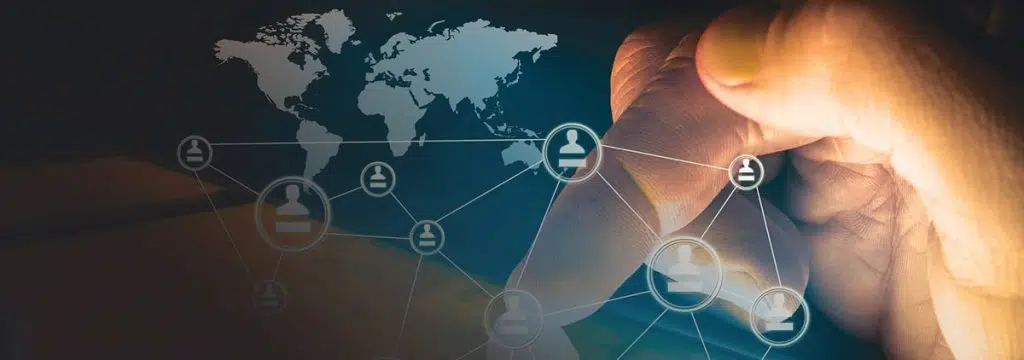The characteristics of B2B buyer behavior has evolved in recent years. Buyers are more inclined to self-navigate the decision-making process as they learn about new vendors and solutions. They’re demanding more relevant content and outreach from sales when they’re ready to make a purchase but prefer to remain anonymous at the earlier stages of the buying process. In many ways, their behavior mimics that of B2C buyers, with social media, online ads and reviews by peers playing a bigger role in the research and purchasing process.
All of these findings and more were revealed in Demand Gen’s 2018 B2B Buyers Survey report. In this post, we aim to dig deeper into this data and highlight what we feel are the most important trends and statistics surrounding B2B buyer behavior in 2018.
Here’s how B2B buyers are finding new vendors
- Online sources: According to the Demand Gen report, over 80% of B2B buyers use more sources to research products and services than ever before and 54% of them say that web search is a key way they learn about new solutions.
- Social media: 54% of B2B buyers said they rely on social media to research vendors or solutions. LinkedIn is the most important social network for B2B buyers, with 52% of survey respondents indicating it was very important or somewhat important.
- Vendor websites: 46% of B2B buyers indicated that vendor websites were an important resource in their decision-making process. While buyers learn about products and solutions via vendors’ websites, they are nearly 60% down the sales path by the time they engage with a brand’s website.
The B2B Buying Cycle is 1 to 3 Months
61% of buyers indicated that the length of the buying cycle has increased at least somewhat compared with a year ago. Buyers spend more time researching purchases and use more sources, plus over 40% have formal buying groups or committees in place to help them review purchases with more than 80% indicating that between 1 and 6 people are involved in the purchase process for a new solution or hiring a new vendor.
How do B2B Buyers Use Social Media?
As noted above, social media (particularly LinkedIn) plays a role in the decision-making process of more than half of B2B buyers. This is up from 20% from 2012, the year Demand Gen initiated the first survey. Here are some of the various ways B2B buyers use social media:
- 47% Browse existing discussions
- 38% Ask for suggestions and recommendations
- 36% Connect with thought leaders
- 36% Connect directly with vendors
This makes sense for B2B buyers since so many of their peers are on LinkedIn and other social media communities (we’re looking at you, Facebook). Blogs were also listed as a key resource for B2B buyers, with 42% indicating that blogs had a big impact on their research process.
Top Content for B2B Buyers
With all this talk about research playing a large role in the B2B buying process, it’s important to understand what kind of content that buyers find valuable. The content was obtained in a variety of ways including social media, blogs, company websites, and third-party publications. Here’s what B2B buyers liked the most.
- Relevant industry (or company) specific content (76%)
- Easy access to pricing (67%)
- Industry expertise as demonstrated on vendor websites (66%)
- Easy access to content (no registration required) (64%)
- Vendor-focused content such as case studies and data sheets (62%)
- Thought leadership content such as white papers and research (56%)
- Search and navigation tools (54%)
Based on the above list, it’s clear that companies need to provide content via multiple digital touchpoints. It’s not enough to have a company website – even one that’s well stocked with white papers, case studies, and data sheets.
B2B vendors also need a strong social media presence and (ideally) a presence on relevant trade publications either by contributing articles and editorial content or through straight-up advertising.
And speaking of ads…
49% of B2B buyers noticed vendor display ads during their research process and said these ads tended to have a positive impact on their purchasing decision. 27% of buyers noticed ads but stated that the ads had no influence on their perception of the vendor.
The role of sales
The Demand Gen survey emphasized that the role of the salesperson is becoming more critical for B2B sellers, particularly at the 1 to 3 month and once buyers have completed their preliminary research.
A quick, responsive sales force is critical since 41% of buyers either accelerate a purchase – or put it on hold – based on changing needs. Buyers look for salespeople to understand the specific needs of their industry, be timely and consistent with their responses, and offer valuable insights. Here are a few open-ended insights from the survey that we thought were particularly interesting.
Respondents think that vendors should:
- “Demonstrate the successful use of their product in our industry”
- “Do additional research on us.”
- “Pull more specific case studies for our industry.”
- “Provide more examples of how other companies use their solutions.”
Conclusion
As 2018 wraps up, you’re probably looking ahead to 2019 planning. As such, we hope this summary of trends and statistics will help you understand what makes B2B buyers tick. Evaluating how buyers research new vendors, what content is useful to them, and how social media and other resources play a role in the B2B buying process is critical in understanding how best to reach your customers. These statistics paint a picture of today’s B2B buyer that can help inform your funnel outreach strategies for next year.



